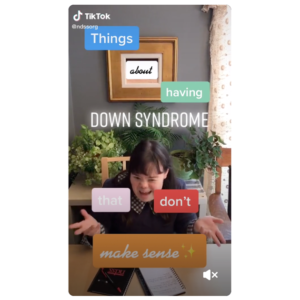Facebook, Twitter, LinkedIn, Snapchat, TikTok, Instagram — the list of social media platforms seems endless and it is constantly growing. The most effective advocacy organizations leverage social media as a key element in their digital advocacy toolkit, staying abreast of trends and best practices.
FiscalNote’s 2021 Advocacy Benchmark Report found that social media can be a powerful ally when it comes to engaging current supporters and reaching new ones, with an almost 49 percent increase year over year. Using social platforms strategically ensures advocates can show their support publicly, educates newcomers, and keeps everyone motivated and mobilized.

What is Social Media Advocacy?
Social media advocacy means taking advantage of social networks to promote your cause and connect with supporters. Leveraging social platforms allows your organization to tap into the wealth of resources at your fingertips: employees, business partners, customers, industry influencers, and other stakeholders.
Your employees and clients are already invested in your continued success — so use social media to engage them, inspire them, and boost your brand. Social media advocacy allows your organization to be recognized as trustworthy and authentic and increases your reach without paying a dime.
Social Media Strategies for Advocacy
Wondering how to use social media for advocacy? It starts with a winning strategy. The exact approach your organization uses will depend upon your issue and goals. As you build your strategy, keep your objectives and the overarching message you want to convey front and center.
The most successful social media strategies for advocacy happen when organizations are self-aware and play their strengths. That’s why social media strategies aren’t one-size-fits-all. Use the tools and tactics here to build a plan that aligns with your cause and goals.
Determine Which Social Platforms Are Best at Reaching Your Audience
 With all the social media platforms to choose from, it can be hard to know where to start. Chances are, your target audience gravitates to a few platforms, so research what those are and start there. For example, if you’re targeting a Generation Z audience, you might focus on Instagram, YouTube, and TikTok. On the other hand, if your audience is in their 40s and 50s, Facebook and Pinterest might be your go-to.
With all the social media platforms to choose from, it can be hard to know where to start. Chances are, your target audience gravitates to a few platforms, so research what those are and start there. For example, if you’re targeting a Generation Z audience, you might focus on Instagram, YouTube, and TikTok. On the other hand, if your audience is in their 40s and 50s, Facebook and Pinterest might be your go-to.
Consider whether your target audience is male or female, their age group, political affiliation, level within an organization — then research the most popular platforms for that demographic. There’s no need to burn yourself out by creating a dozen social accounts right away — go where your people are.
FiscalNote’s 2021 Advocacy Benchmark Report found that Facebook was by far the number one social network for driving traffic to FiscalNote advocacy clients’ Action Centers, with 91 percent of sessions. Twitter is a distant second, at 3 percent, followed by Instagram Stories at just over 2 percent.
“In my job, I’m constantly checking Twitter, Facebook, and Instagram feeds for the latest news and updates on client campaigns,” said Carolyn Weems, senior vice president of The Herald Group. “Many advocates favor one channel over the other and are often not checking their social media feed until later in the evening or on the weekends. So, learning how to communicate more effectively to my audience has been critical to ensuring a successful campaign.”
As you hone your social media advocacy strategy, you’ll learn what channel your advocates favor and when they are most active online.
Check out our 2021 Advocacy Benchmark Report to see how your campaigns fare against others in your industry. Download now
Connect With Policymakers on Social Media
Social media gives easy access to policymakers, politicians, and government officials. There’s a better chance of getting a response or interaction with a policymaker as social platforms can be a more unfiltered, informal way they communicate with constituents.
Advocates can contact their lawmakers directly on social media using VoterVoice, connecting them with local, state, and federal lawmakers, ensuring your message is heard by those with the power to enact change.
“Members of Congress love to use social media and it can be an incredibly powerful and engaging tool,” shared Lincoln Clapper, chief sales officer at Advocacy Associates. “We recommend social media strategies to all of our clients as part of their overall advocacy initiative.”
Connecting with policymakers on LinkedIn, Twitter, and Instagram can be a creative way to get their attention and be noticed by a wider audience. Nearly all policymakers are on Twitter, and a simple retweet or reply to their content can get your organization noticed.
If all the noise on social media is overwhelming, consider employing the help of social media monitoring tools specific for government affairs. FiscalNote allows teams to quickly drill down and find the tweets of more than 4,000 legislators. You’ll have the ability to search for tweets by person, handle, hashtag, keyword, government branch, jurisdiction, or political party, and even what others are saying about them, to find the data you need to follow.
Develop a Strategy for Posting Content
Before you start posting on social media, take time to develop a thoughtful content strategy. Plan how often you will post and set goals for engagement and growth so you’ll know how your strategy is working. Organizational tools like a content calendar are essential. A social media content calendar allows you to plan how often you will post, on which platforms, and what type of content you will share daily. A content calendar is key to keeping track of your social media posts to ensure you’re posting a wide variety of content, including videos, polls, live streaming, and graphics to engage your audience.
Expect your strategy to evolve as you learn about your audience and as your organization grows — but starting with an organized strategy will help manage all the moving parts of social media advocacy.
Engage With Supporters
Don’t just engage with policymakers and other advocacy organizations; take the time to engage with your supporters as well. If they leave you a positive comment or ask a question, reply. If they follow you, follow them back. If they post something about your organization, re-share it.
These interactions mobilize supporters, encourage them to continue engaging with your content, and showcase your organization’s authentic, human side. Replying to or following supporters takes only seconds, but it goes a long way in establishing your organization’s brand, reputation, and active social media presence.
Develop Relationships With Members of the Media
 Social media also allows you to develop relationships with members of the media since it gives you easy access to journalists, TV stations, local influencers, industry leaders, and more. Fostering genuine relationships can be as simple as a reply to a Tweet, re-sharing a Facebook post with your own commentary, or a direct message keeping them updated on newsworthy happenings within your organization.
Social media also allows you to develop relationships with members of the media since it gives you easy access to journalists, TV stations, local influencers, industry leaders, and more. Fostering genuine relationships can be as simple as a reply to a Tweet, re-sharing a Facebook post with your own commentary, or a direct message keeping them updated on newsworthy happenings within your organization.
Just like policymakers, members of the media use social platforms to stay connected with people and organizations in the community. Even small positive interactions on social media can be a powerful tool for relationship building and name recognition.
Need a social media advocacy content calendar template? Download template
Use Hashtags Relevant to Your Industry
A hashtag is a word or phrase preceded by the pound symbol, for example, #advocacyinaction or #inclusionmatters. Hashtags are an essential part of advocacy through social media. These little links within a platform allow users to find similar content and group together conversations around related topics.
When you post a piece of content, whether it’s a video, link to an article, or infographic, add a couple of hashtags that are relevant to the content and your industry. If you’re not sure what those hashtags should be, do some searching on the social media platform to see what hashtags others in your industry are using. Just adding a few hashtags can make your content easier to find for people interested in the topic and can ensure you maximize engagement on posts.
Become a Thought Leader in Your Topic
Social media provides a unique opportunity to establish your organization as a thought leader in your industry. Consistently posting thoughtful commentary, sharing timely and relevant news, and adding value to the conversation sets your organization apart as a thought leader.
Thought leaders contribute something to a bigger conversation, so think about what you can add that makes your organization stand out. Consider contributing some data or new information, or chiming in when your industry is in the spotlight. Becoming a thought leader can build your reputation and improve name recognition. It also shows people that your organization is trustworthy, relevant, and informed about current issues.
Examples of Social Media Advocacy Success
Read the stories of advocacy organizations that dove into social media advocacy, keeping their goals and brand values in mind, and saw amazing results.
New York State Animal Protection Federation’s Winning Facebook Strategy
 The New York State Animal Protection Federation (NYSAPF) knew they needed to mobilize their supporters to take action on issues that mattered to the organization. Just emailing current advocates wasn’t enough, so they knew they needed to take things to social media.
The New York State Animal Protection Federation (NYSAPF) knew they needed to mobilize their supporters to take action on issues that mattered to the organization. Just emailing current advocates wasn’t enough, so they knew they needed to take things to social media.
Libby Post, NYSAPF executive director, piggybacked her outreach emails with Facebook campaigns to boost her response rate, creating a holistic advocacy strategy.
“I’ve used an effective combination of Facebook and [FiscalNote’s advocacy solutions] to build a base of close to 2,000 advocates from across the state, who will respond when I send out something on Facebook with the link, or if I send out an email or communication directly to my list,” Post said.
Her social media engagement efforts meant Post substantially grew her advocacy list, and the Governor himself even got involved when Post’s advocacy engagement for the Companion Animal Capital Fund caught his eye.
“When the Request For Proposal (RFP) was released, the governor’s office put together a very cute video promoting the fund,” Post said. “He didn’t have a pet at the time, but there was a picture of him at the state fair holding a German shepherd puppy that is going to become a police dog.” Read more here.
How the National Down Syndrome Society Found a Whole New Audience on TikTok
 The National Down Syndrome Society (NDSS) jumped on the TikTok bandwagon to educate the public about Down syndrome and the inequalities people with disabilities experience.
The National Down Syndrome Society (NDSS) jumped on the TikTok bandwagon to educate the public about Down syndrome and the inequalities people with disabilities experience.
NDSS’ TikTok campaigns have garnered thousands of views, with one single video at 3 million views so far.
“The future generation is really who is on TikTok right now,” Nicole Patton, manager of state government relations at NDSS. “There’s a whole new audience to be tapped into that is going to be affected by or is affected by these issues.”
Thanks to TikTok, plus using VoterVoice’s powerful tools, Patton’s team added five new members to their Congressional Task Force on Down Syndrome without even doing direct outreach to those offices. Read more here.
Get the ultimate advocacy, planning, strategy, and skills guide. Download
Tools for Social Media Advocacy
Each social platform offers unique tools to reach your audience. Using social media as an advocacy tool is most effective when you know what each platform offers and how to take advantage of it. Here are the most important tools to know:
Facebook Groups
 Facebook Groups are a place to connect with people who share your interests. They allow you to meet new people, mobilize your advocates, share information, educate, and get support for your issues. Groups can be public (anyone can see what is posted) or private (only members can see the information), so you can customize them based on your organization’s needs.
Facebook Groups are a place to connect with people who share your interests. They allow you to meet new people, mobilize your advocates, share information, educate, and get support for your issues. Groups can be public (anyone can see what is posted) or private (only members can see the information), so you can customize them based on your organization’s needs.
Groups allow you to foster community, help supporters feel like part of something bigger, and create interaction and engagement. If you are organizing volunteers, want to hear people’s stories, or find local supporters, Facebook Groups are the place to be.
Instagram Stories
Instagram Stories allow you to share photos and videos to your organization’s “Story” which is visible to followers of the Instagram account. Instagram Stories are gaining ground in popularity, FiscalNote’s 2021 Advocacy Benchmark Report found. The channel started bringing traffic to advocacy Action Centers in 2018 and is seeing big gains year over year. Between 2019 and 2020, traffic from Instagram Stories jumped 83.6 percent — the biggest increase across all social networks.
Instagram Stories disappear after 24 hours, so they’re a great way to share last-minute updates, poll your audience, and create a more informal style of content than on your Instagram feed. Stories can capture a specific moment that is raw and not necessarily picture perfect. You can also add fun effects to Stories, such as text, stickers, filters, hashtags, quizzes, and songs. Instagram Stories allow you to be creative and show your organization’s authentic personality.
Live Video
Streaming live video is easy with Facebook or Instagram. Live video is an important social media advocacy tool that can deeply engage followers who aren’t able to be in person but want to feel like they are.
Going live for a Q&A, behind the scenes, panel discussion, rally, or other event takes supporters along for the ride. They’re able to leave comments and reactions in real-time, which you can respond to while live streaming.
Twitter Hashtags
As mentioned before, a hashtag is a word or phrase preceded by the pound symbol, used on almost all social media platforms. Particularly on Twitter, hashtags are prolific and an essential part of advocacy through social media. These links allow users to find similar content on Twitter and group together conversations around similar topics.
Using a few hashtags that are relevant to the content of your Tweet can help new people find your page and start engaging. Do some research to find the Twitter hashtags that are trending, or very popular, to maximize your reach.
Build a Successful Social Media Advocacy Strategy with FiscalNote and VoterVoice
From staying on top of the latest developments around the policy that matters most, to mobilizing supporters to message lawmakers through multiple channels, to reporting on advocacy efforts, success is largely dependent on using the right technology tools. FiscalNote’s advocacy solutions empower organizations of all sizes to quickly adapt and execute innovative advocacy strategies.


